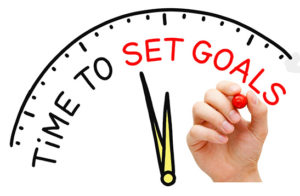Goals
The "How" for the "Why" of your Mission Statement

Creating and Setting Goals
This can be one of most difficult parts for most people or groups to do but if you follow a few simple rules, it will become the easiest part! The problem with goal setting for most people is that what they think is a goal is actually just a dream.
For example, a Brother might say “ I want to be proficient in ritual” and then tell you that is one of his goals. Stated in this manner, it’s just a dream. Why? Because it lacks the details needed to create a roadmap to accomplishing the dream. It has insufficient specificity, it’s not time dimensioned, and it may or may not align with his personal mission statement and so on.
If he says “I want to be proficient in all sections of the ritual. And I will accomplish this in X months starting June 1st, I will be proficient in the EA by July 30th, the FC by October 30 and the MM by by March 1st, by doing the following…” he is much closer to an actual goal and has a much better chance of achieving his goal!
The difference is that the second wording of the goal passes the SMART test. What is the SMART test?
SMART Test
- S – Specific – The more specific the better. We need new members doesn’t qualify because it doesn’t say how many.
- M – Measurable – If you can’t measure the outcome of this goal, it isn’t a goal. We need more members is not measurable in any meaningful way. We will add 6 new members to Lodge is something that can be measured.
- A – Achievable / Attainable – Is this goal really acceptable to you or your organization? Does it represent something that is within your budget, talent, time and interest? It’s good to shoot for the stars but it’s important to be realistic as well.
- R – Relevant – Check this goal against your Mission Statement. Is it relevant to what you defined in the Mission Statement? Is it relevant to your Lodge?
- T – Time-Bound – There has to be a due date for this goal to be accomplished. With out a time dimension, this project can and probably will go on forever. This time element also has to be realistic for the goal.
Goal-Setting Process
This is actually one of most fun things you can do in a Lodge. You might be surprised how many good ideas your members have and how excited they are about doing something active.
- Hold a brainstorming session (see sidbar) on what goals the Lodge would like to undertake
- Following the brainstorming process, weed out the suggested goals to a manageable number, perhaps 3 - 5
- Submit each proposed goal to the SMART test using the form below and revise until the goal can pass the SMART test
- Publish the list of goals to all members